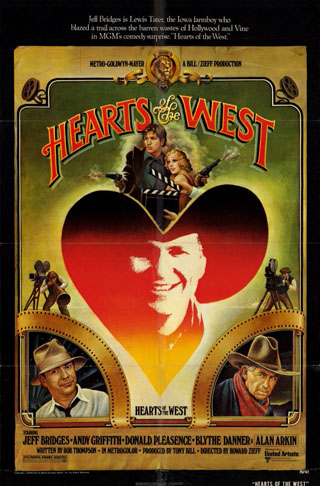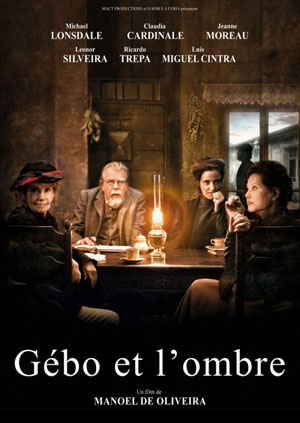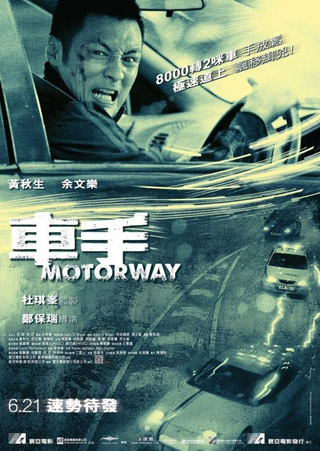“The new and the vital brush up against the lovingly exhumed in Film Comment Selects, a strong cinematic sampler that starts Monday”—today!—”at the Film Society of Lincoln Center,” begins Manohla Dargis in the New York Times. “Each year the brain trust at Film Comment magazine brings together this diverse, pleasure-driven series mostly made up of work that has recently played on the festival circuit, from Berlin to Toronto. Although some selections, including the opening-night movie (the icky Simon Killer) and closing-night selection (its opposite, The We and the I), have distribution, others have slipped below the radar because they are too eccentric, too tough, too indefinable or sometimes just too good.” She especially recommends Kiyoshi Kurosawa’s Penance and Howard Zieff’s Hearts of the West (1975), “a charming look back” at “the B-movie world of the early 1930s.” It “stars the ideally cast Jeff Bridges as an aspiring western novelist who hopes to become the next Zane Grey and ends up at a B-movie studio. The wonderful cast includes Andy Griffith as a celluloid cowboy, Alan Arkin as a hack director and Blythe Danner as the dame slinking around the edges.” See, too, Jonathan Rosenbaum‘s 1976 review.
In Time Out New York, Keith Uhlich recommends Manoel de Oliveira‘s Gebo and the Shadow, “a master class in how to film theater for the seventh art,” Ashim Ahluwalia’s “strangely compelling Indian feature” Miss Lovely, Mikael Marcimain’s Call Girl, “a lurid, tragedy-tinged epic in the Boogie Nights vein,” and Ben Wheatley’s Sightseers, “an affectingly satirical portrait of two people in deeply tainted love.”
Jesse Cataldo at the House Next Door: “Full of inky blacks cast against a sickly patina of pinks, greens, and yellows, Ashim Ahluwalia’s Miss Lovely envisions a world in which Hollywood glamour has been passed through a filter of grime and decay. It’s a fitting look for this period portrayal of Bombay’s ‘C-movie’ scene, one that immerses itself in a nasty demimonde of hustlers, gangsters, and wannabe actors, who produce cheapo trash flicks in blatant defiance of decency laws. Ahluwalia puts a lot of care into depicting this setting, which, despite its late-1980s time period, remains mired in a peak-’70s aesthetic, full of seething disco parties, gargantuan lapels, and regrettable hairstyles. A gifted stylist, the director nails the visual aspect, but struggles finding an interesting story amid the haze of hairspray and garish colors.”
Updates: Kenji Fujishima at the House Next Door on Gebo and the Shadow: “Though the film is dominated by fixed-camera setups within one set, more or less, the Portuguese auteur’s minimalist style, rather than seeming tired, ultimately meshes beautifully with the story’s world-weary, reflective substance.”
For Film Comment, Jonathan Robbins talks with Antonio Campos about Simon Killer. More on that one from John Oursler at Cinespect.
Updates, 2/19: Max Nelson‘s overview of the series for the L opens with Sébastien Betbeder’s Nights with Theodore, in which the Parc des Buttes-Chaumont “exert[s] a strange hold” over young Parisians in love, and moves on to Sightseers, Philippe Grandrieux’s White Epilepsy, and Gebo and the Shadow.
Indiewire‘s Eric Kohn recommends five films: Gebo, Sergei Loznitza’s In the Fog, Simon Killer, Sightseers, and The We and the I.
Chris Cabin at the House Next Door: “A lugubrious, elongated study of forced prostitution and political lechery, Mikael Marcimain’s Call Girl loosely depicts the events that led to Sweden’s so-called Geijer scandal and the arrest of brothel madam Doris Hopp in the 1970s…. Aesthetically, Call Girl is consistently engaging and fluid, but never particularly innovative or surprising, and the narrative is hardly different in its unremarkable competence.”
Updates, 2/20: Once again, Chris Cabin at the House Next Door: “Among the dense interplay of four narratives set against the final days of Eluana Englaro’s life in 2009, a consistent image comes up throughout Marco Bellocchio’s Dormant Beauty, that of someone awaiting a reply, even when all evidence suggests they will not be answered. As such, it’s a film about faith, but one that explores and puts greater emphasis on faith in connection, in humanity, than in the Almighty depicted in Catholicism, of which Bellocchio is an outspoken, defiantly angry critic.”
For Film Comment, Jonathan Robbins interviews Sébastien Betbeder (Nights with Theodore).
Update, 2/21: “If watching Ingmar Bergman’s Face to Face left a sliver of doubt about the director’s scorn for modern psychiatry,” writes Ela Bittencourt at the House Next Door, “From the Life of the Marionettes makes it amply clear…. [I]n its stark black-and-white rendition of psychological anguish, and in its categorical refusal to grant any noble impulses to medical practitioners, it could be seen as a giant stylistic leap for Bergman: a savage yet coolly overplayed parody.”
Updates, 2/23: Three fresh reviews have appeared at the House Next Door. Calum Marsh: “Favoring (comparative) restraint over expected spectacle, [Cheang Pou-soi’s new] film’s abundance of car chases derive an impressive visual dynamism from the elegance of their conception rather than the caliber of their execution. In other words, Motorway is a stunt film whose stunts are less conventionally compelling than they are thoughtful, a distinguishing quality that’s as much a boon to the film’s overall quality as it is a liability—and unfortunately the latter ends up winning out.”
Abhimanyu Das finds Kieran Darcy-Smith’s Wish You Were Here to be a “maddeningly underwritten thriller/domestic-drama hybrid. Cutting from neon-streaked sequences of the four principals holidaying in Cambodia to cryptic shots of the protagonist, Dave Flannery (Joel Edgerton), staggering shirtless and bloodstained through a pre-dawn landscape, the prologue is pregnant with portents and possibilities. Unfortunately, the initial promise isn’t quite carried through to the end.”
And Nick McCarthy reviews Nights with Theodore.
Update, 2/26: Dustin Chang for Twitch on Grandrieux’s White Epilepsy: “While watching this 67 minute film, a sort of primal Adam and Eve story with no dialog, displayed in an inverted format (acting taking place only in a vertical rectangle in the center of the screen- like an iPhone video) among the room full of adoring cinephiles (myself included), I realized that this is a product of the unavoidable conclusion reached by an uncompromising visual artist whose interest lies in human bodies and the nature of violence…. White Epilepsy would undoubtedly make a fine gallery installation.”
Update, 3/1: For Jesse Cataldo, writing at the House Next Door, Gondry’s The We and the I is “a delirious representation of incipient personalities in bloom, its form as amorphous and reckless as the vibrant youths it portrays.” And Film Comment‘s Violet Lucca interviews Gondry.
For news and tips throughout the day every day, follow @KeyframeDaily on Twitter and/or the RSS feed. Get Keyframe Daily in your inbox by signing in at fandor.com/daily.






